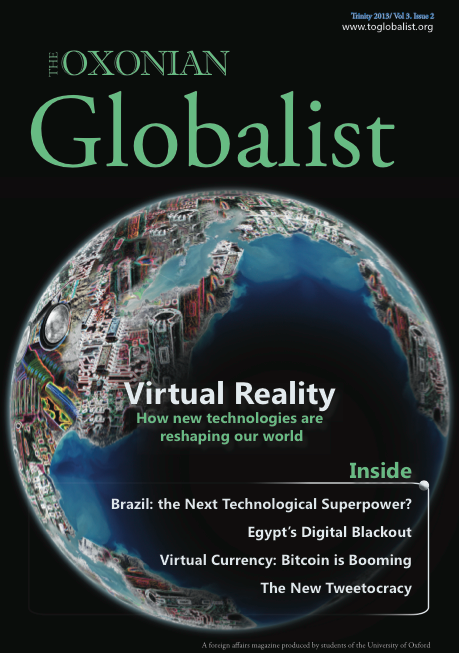
A Bangladeshi soldier in the eastern Democratic Republic of Congo. Photo by United Nations Photo via Flickr.
Perhaps it is the catchy acronym “MONUSCO” which fails to appeal to the public consciousness. It could be the hallmark of problems closer to home for developed nations. Whatever the reason, few people have heard of the United Nations’ enormous and expensive “white elephant” in the Congo. Recently, MONUSCO made a valiant, clawing grab at headlines around the world when it allowed the town of Goma in eastern Congo to fall to rebels without firing a shot. Compared to the headlines it has received in the past, that counts as good publicity for a force which faces accusations of rampant corruption, deliberate incompetence and even collaboration with groups responsible for the very crimes against humanity it is meant to stop. All this is more serious still when one considers the gravity of the problem that exists in the country.
So what is it? MONUSCO, the United Nations Organization Stabiliation Mission in the Democratic Republic of the Congo, is, above all, a military peacekeeping force. It was formed in 1999 with the mildly more appealing acronym of MONUC, which aimed to keep the delicate peace in the Congo and protect its civilians. At 19,000 men, it is the biggest United Nations peacekeeping force ever assembled and, costing around $1.4 billion a year, also the most expensive. This huge force is now assigned the unenviable job of policing the delicate 2003 ceasefire after the Second Congo War, in which two million are estimated to have died. By 2011 it looked as though – despite everything – it had managed it. The fighting in the eastern provinces had become much less of a threat and a measure of political stability had returned. Now, however, the UN faces a new and equally dangerous threat. In 2012 a new rebel group sprung up in the Eastern province of Kivu. The March 23rd Movement (or M23 for short) consists of disillusioned soldiers from the Tutsi ethnic group who feel betrayed by the central government. As M23 makes significant gains in the Kivu region and the Congolese army retreats, MONUSCO forces become more and more exposed and powerless.
The UN has a long and rather undignified history of intervention in the Congo. The first peacekeeping mission was despatched to the country shortly after its independence from Belgium in 1960 and conspicuously failed to bring peace and stability. By the time the force left in 1963, Patrice Lumumba – the great hope for a stable and democratic future – was dead, as were 250 UN personnel, including the UN Secretary General Dag Hammarskjöld, killed en route to ceasefire negotiations. The legacy of its past deployment hangs ominously over the UN’s work in the country today.
Part of MONUSCO’s problem is clearly structural. Like all UN missions it adheres to a restrictive mandate which it must at all times follow. This has led to significant casualties as soldiers are only authorised to use their weapons in self-defence, leading to the deaths of nine Bangladeshi soldiers were gunned down in a single attack in Ituri province in 2005. Examining the mandate itself, the UN is supposed to be a neutral mission where “Protection of Civilians” comes out very much as the priority – so much so it is given its own acronym “PC”. Yet the mandate also stresses co-operation with Congolese government forces to achieve it. The real irony is that the FARDC (the Congolese army) is responsible for a large proportion of the sexual violence, torture and murder that the UN is tasked to prevent. Therefore, the more the UN cooperates with the FARDC, the more the UN fails to achieve the basic principles of its mandate and the more it attracts the bullets of the rebel factions. For this reason too, Congolese civilians tar the force with the same brush as the corrupt and inefficient central government. At the same time, if one accepts the allegations that the rebels are proxies supported by the Rwandan government, the UN has got itself entangled in the middle of a real war with no way to win. Beyond this, the composition of the force has raised some eyebrows too. It is hard to imagine a combination that could cause more friction than India, Pakistan and Bangladesh, but those three countries are the three major contributors to the force.
Apart from its potentially explosive composition, the conduct of MONUSCO forces has been very much in the media in relation to the persistent and well-grounded accusations of corruption. Examples of minor inefficiency – for instance, commanders getting their personal rations flown directly from the capital Kinshasa – are well documented, but far less significant than much more alarming accusations. One does not have to look far to hear stories of MONUSCO officers who have been implicated in smuggling. More worrying still is the story that Indian officers requisitioned helicopters to swap ammunition and weapons with rebels in exchange for ivory. This comes in addition to 40 allegations that Indian and Pakistani troops have been buying gold and marijuana from the same rebel groups. The persistent allegations do nothing to bolster the image of MONUSCO at home or abroad.
However, it is the overall lack of media attention that is the undoing of MONUSCO. It is certainly difficult to imagine a press reaction to the crisis in the Congo similar to that seen during the Syrian Civil War or Malian intervention, yet the humanitarian crisis is much greater. MONUSCO receives little press attention outside Africa and when it is seen in the media, the coverage is invariably negative. What this means is that there is little desire in developed countries to commit soldiers or resources to the mission, creating a force made up badly trained and ill-equipped troops from Africa and South Asia whose support for the mission is questionable. Coupled with significant casualties already suffered by the force, this means that there is little desire to risk extra lives on an already forgotten mission.
Since the capture of Goma, there seems to have been an attempt by the force to take a more aggressive stance on the Congolese rebels and to sort out some of its problems. But it might well be too late. Congolese citizens interviewed by The New York Times no longer appear to support the UN mission. “I’d rather see [the mission] leave and then we could live in peace”, said one. The prospect of an explosive situation left to follow its course may not be desirable, but without the support of the very people it is supposed to protect, arguing to the contrary is difficult. In recent years, the UN has achieved successes in comparable situations around the world, such as Liberia or Mozambique. Perhaps MONUSCO is just a tragic example of what can go wrong – and just how wrong it can go.



